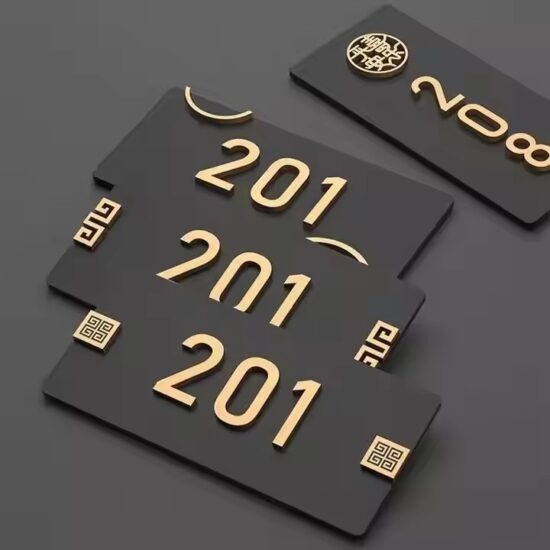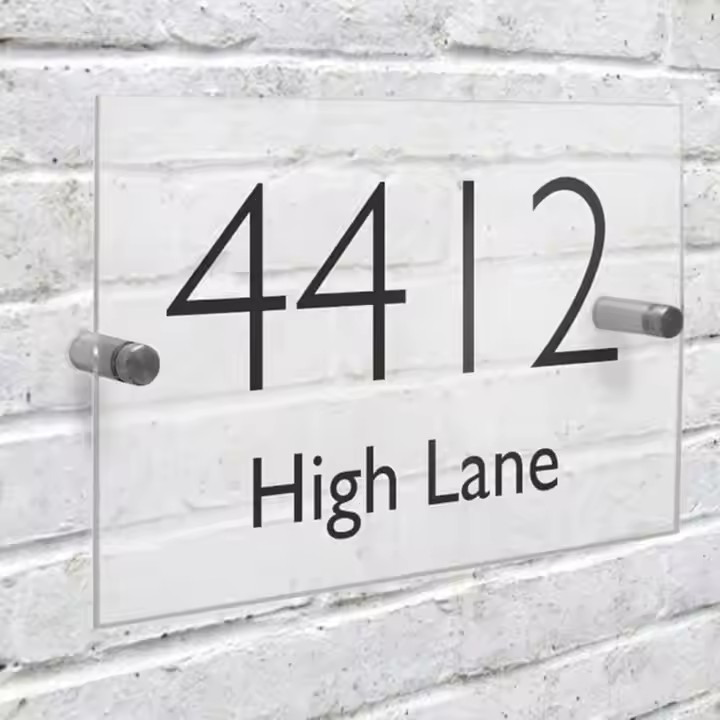

How to Mount Acrylic Door Plates: Adhesives, Screws, or Standoffs?
Acrylic door plates are popular for their sleek appearance and customization options, but how you mount them can greatly impact both aesthetics and durability. Choosing the right mounting method depends on the sign’s size, weight, location, and the surface it will attach to.
This guide compares the three most common mounting options—adhesives, screws, and standoffs—to help you make an informed decision.
🔹 1. Adhesive Mounting
Overview:
Adhesives provide a clean, no-drill solution ideal for lightweight acrylic plates and smooth surfaces.
Pros:
-
Quick and easy installation
-
No damage to walls or doors
-
Invisible mounting, maintaining a flush appearance
-
Suitable for indoor use on drywall, glass, metal, or painted surfaces
Cons:
-
May not hold well on rough or porous surfaces
-
Less durable in high-traffic or outdoor environments
-
Can be difficult to remove without residue or damage
Best for: Small to medium-sized signs in offices, hotels, or clinics with smooth surfaces.
🔹 2. Screw Mounting
Overview:
Screws offer a secure and durable solution, especially for larger or heavier acrylic door plates.
Pros:
-
Strong and long-lasting hold
-
Suitable for both indoor and outdoor use
-
Allows for easy removal and replacement of signs
-
Works on most surfaces including wood and concrete
Cons:
-
Requires drilling holes in the mounting surface
-
Visible screw heads may affect aesthetics unless decorative caps are used
-
Installation can be more time-consuming
Best for: Heavy or large signs, outdoor doors, or surfaces where maximum durability is needed.
🔹 3. Standoff Mounting
Overview:
Standoffs use decorative hardware to mount the acrylic plate slightly away from the surface, creating a 3D floating effect.
Pros:
-
Adds a premium, modern look
-
Provides depth and shadowing for visual interest
-
Secure and durable for various environments
-
Easy to install and remove for maintenance or updates
Cons:
-
Typically more expensive due to hardware cost
-
Installation requires precise measurements and drilling
-
May not suit all interior styles
Best for: Executive offices, luxury hotels, design-focused spaces seeking a sophisticated presentation.
🔹 Choosing the Right Method
| Mounting Method | Best For | Surface Types | Installation Difficulty | Aesthetic Impact |
|---|---|---|---|---|
| Adhesive | Small/medium indoor signs | Smooth, clean surfaces | Easy | Invisible, flush |
| Screws | Large/heavy or outdoor signs | Wood, concrete, metal | Moderate | Visible, can be capped |
| Standoffs | Premium look, 3D effect | Drywall, wood, concrete | Moderate to advanced | Floating, decorative |
✅ Final Tips
-
Always clean the mounting surface before installation to ensure adhesion or screw security.
-
Consider the weight and size of the acrylic plate when selecting mounting hardware.
-
For rental or temporary installations, adhesives offer flexibility without damage.
-
For a high-end look, standoffs enhance branding while maintaining functionality.
-
If unsure, consult with your sign manufacturer or installer for the best solution tailored to your space.




